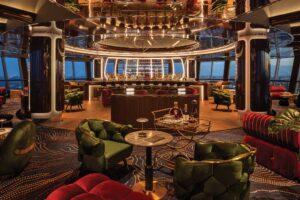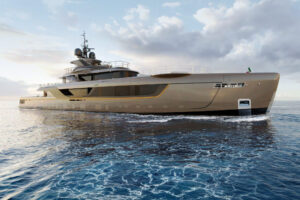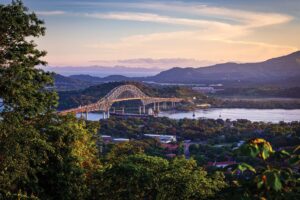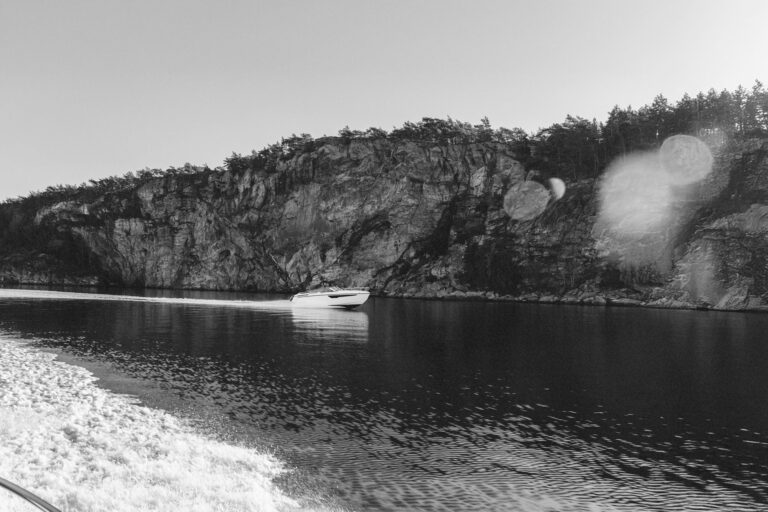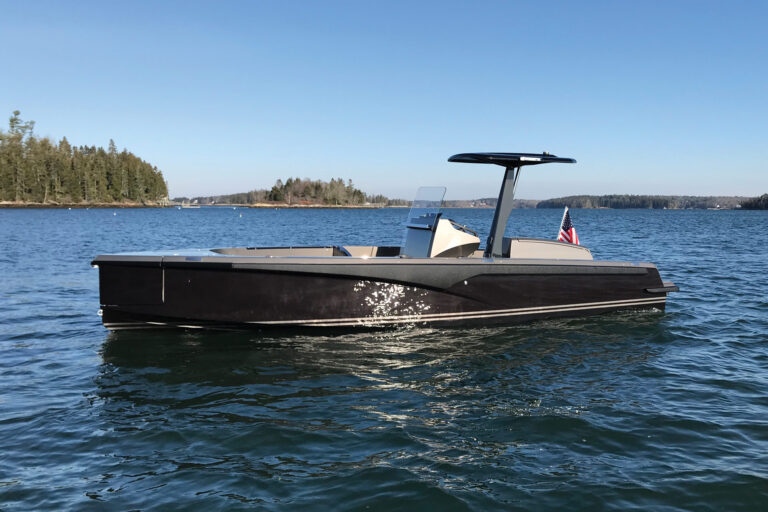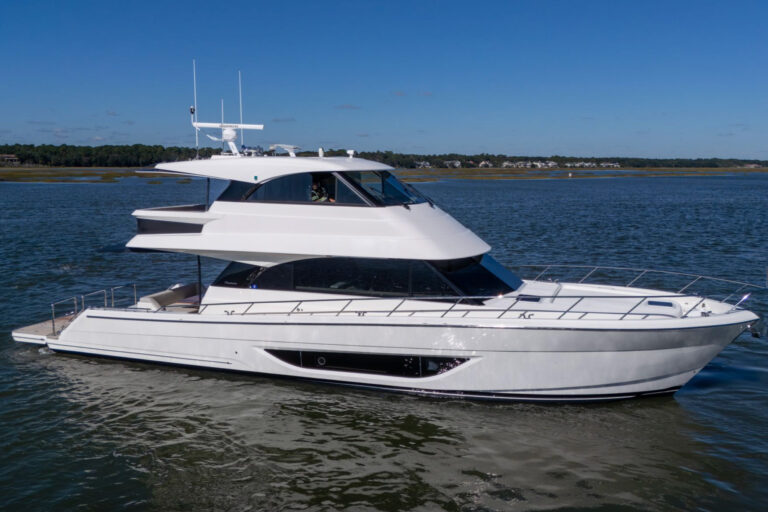“Welcome to Gondwanaland, said our captain as we ghosted past shores of strange, iconic beauty. This was likely how the scenery looked 65 million years ago-roughly when Gondwana, the landmass comprising what we know as India, Africa and others, broke apart, and the Seychelles were born. Lightly touched over the centuries by Arab trading dhows, Portuguese naus and pirate ships, the archipelago of some 110 islands, 860 miles east of Africa in the northern Indian Ocean, is today a sanctuary for the world’s rare plant and animal life, including charterers like us.
Extreme nature, effortless nurture: This is what brought four of us across two continents and nine time zones to sail the blue-hull, 70-foot High Aspect. Aboard were first mate and chef extraordinaire Linda Goddard and Captain Keith Jones, who are also the boat’s owners. From bareboats to superyachts, choosing among the charter options on Mahé Island had been difficult until we discovered that most are limited to day sailing within the inner isles. Only High Aspect offered the license and local knowledge to cruise day or night all the way to Assumption, the end of the Seychelles line. The possibilities were endless: We could chase the world’s largest dogtooth tuna off the Seychelles Plateau or explore Aldabra, the world’s largest raised coral atoll.
Imagine Keith, our tall, tireless and passionately scientific captain; and Linda, petite and high-spirited, an artist of food and wine. Add Steve Zelia, a young Seychellois who crews the yacht on long passages, and you can imagine the fun we four multinationals had as we gathered around a freshly caught tuna served sashimi-style with icy bottles of the local lager, SeyBrew.
The sun was having its last hurrah over the sweeping arc of Beauvallon Beach when we noted the cloud formation over Morne Seychellois.
“What a peculiar sky, someone said of the mottled cloud cover, which resembled a moth-eaten blanket.
“A wool-cotton sky, noted Keith. He and Linda bought the International Yacht Design sloop in Ft. Lauderdale, overhauled her in their native England and sailed east, intending to circle the world. After nine years in the Seychelles, they were as adept in their rarified environment as lifetime residents, recording with a dinghy and handheld depth sounder the only charts of the outer islands.
“A wool-cotton sky means a weather change, Keith said. “It could be rain or sun, but it means a change, for sure.
If the gospel according to our Seychelles cruising guide was that “skies are clear from May to October, and there is no hurricane season, creating “perfect sea and weather conditions for charterers, what was that cyclone doing 200 miles to our north? Keith had already weighed anchor for the five-hour passage to Praslin when we emerged the next morning from our four queen staterooms with en suite showers fore and aft. The center cockpit was laid with Linda’s lemon-and-honey-garnished pancakes, and off we sailed into Vasco da Gama’s fabled jade ocean-the only place where granite mushrooms from 23,000 feet below the surface into life-giving earth. Tropicbirds soared, fish leapt, and the newly rigged yacht rode high and stiff over the powerful swells. We had barely snugged into Chevalier Bay-an anchorage like liquid emerald with a beach, Anse Lazio, that has been called the most beautiful in the world-when the sky unleashed a deluge. Then, the unthinkable: A 1,500-mile-wide tropical depression moved in for 10 days’ duration, and the rain continued hour upon hour, night upon day.
But never mind. If you must be stuck in the Seychelles, Praslin and the near islands are fine places to be. To our stern, 150 species of fish lurked at the base of rugged Aride, seabird population 1 million, human population zero. To our south, Cousin and Cousine gave sanctuary to the near-extinct Seychelles warbler, as well as to actor Tom Cruise, who has been sighted at the three-room Cousine Island Lodge.
On Curieuse, to our north, morning glories carpeted the silky beaches, and colorful coconut crabs, weighing up to 13 pounds each, scattered as we hiked inshore. A trail of the native pink granite led up, down and over a seawall to a preserve of giant tortoises rescued from Aldabra, the outermost Seychellois island. There, Charles Darwin first encountered them in their drab armor, depleted by generations of seamen who survived on their flesh. Now, hundreds were bathing in the mud and grazing on young leaves and grass, innocent of the wonder they inspired in us.
So, we carried on while tourists fled to their bungalows, and bareboats huddled in sad, waterlogged pairs. Keith and Linda knew the safest anchorages, the bays of least surge and the beaches of driest landing. Their two tenders gave us freedom of movement, while their Internet access, cell phones and satellite feed kept us in touch with the weather forecast, offices and home. A network of friends, from fishermen to officialdom, covered every other contingency, as when a search party found two of us who had lost our way hiking and shepherded us back to the yacht, sheepish but no worse for wear.
There were no complainers among us, and even the yacht was cheerful: bone-dry, bright with varnish and many portholes and invariably warmed with the aroma of freshly baked bread. Rumpled and wet, we returned from our outings to a sweet, white bread accompanying a lunch of fresh, fried job fish, or a garlic-and-rosemary flatbread to complement Linda’s linguine prepared with bacon, mushrooms and fresh basil in white wine and cream. Despite downpours so loud we had to shout to be heard, a full cockpit enclosure allowed us to dine and entertain out of doors into the small hours of morning.
In 1609, a sailor described Praslin, in all its 7 miles, as “an earthly paradise of many coker nutts, while a former Seychelles governor went so far as to declare it the site of the Garden of Eden. It was pouring buckets when we entered the site known as Vallée de Mai, in the island’s interior, where the world’s tallest palm bears the world’s most spectacular “coker nutt, the coco de mer. Inside, the vestige of prehistoric forest was hushed and vaulted like a church, its massive leaves serving as our umbrellas. Occasionally, we could see the fabulous coco growing in purple-black clusters weighing upward of 600 pounds. So seductive is this largest of nature’s seeds that it was once worth its weight in gold in Indian and Asian markets. Horticulturists from the likes of London’s Kew Gardens tried by legal and other means to obtain specimens, and tourists pay hundreds of dollars for a hollow coco (the only way it can leave the country) even today. Amazingly, like so many things on this frontier of biodiversity, the coco de mer survived into our century and grows only here.
There was a moment when Pierre Hurel, our French charter companion, emerged from the forest wearing a headdress of dripping palm fronds, at which we broke into hysterical laughter.
“I’m getting a leetle tired of zee rain, he muttered.
Otherwise, we played happily with Keith’s carbon-graphite fly rods and his “dive lite rig of weight belt, mask and snorkel, and pint-size plastic tanks from Spare Air. Equipped with tanks and compressors for more serious sport, he and Linda have logged the ocean’s walls and shelves clear to Assumption and Aldabra, where Cousteau filmed the 1956 documentary The Silent World.
Graciously, with no prompting whatsoever, Keith and Linda invited us to stay another week on the chance of better weather, but it was not to be. So, we did not see the limpid bays and blinding white beaches in their full glory or cross the African Banks to the Amirantes islands, where a human presence is so rare that the red-footed boobies will land on your head.
Were we disappointed? Not as much as you might think. What we missed in fair weather, High Aspect made up for as charter yachts are seldom called on to do. Far exceeding the norm for knowledge of their destination, Keith and Linda were first-rate guides, equipped for every occasion. In a destination notoriously short on provisions and distractions, we reveled in good company, food and wine. Our hosts continually freshened our spacious and nicely decorated staterooms, adapted our itinerary, and anticipated the weather and our every need. We also liked them-a lucky thing, since circumstances threw us together to an unusual degree.
This explains why ours were among the few happy faces at Seychelles International Airport as we awaited our return flight. Gradually, the departure lounge filled with travelers recounting washed-out vacations and shopping furiously as if to make up for them. The duty-free store offered several purple-black coco der mers, starting at $200 with the requisite license to remove them from the country. Should we? The temptation came and passed.
“Could you stamp this clearly, please? I asked the customs official who took my passport. With evident pleasure, he imprinted the purple-ink symbol of the coco de mer.
When I want to remember laughing until it hurt, the fluorescent greenness of the forest or pink boulders smoothed into infinite wrinkles and folds, that simple image brings it all back.
Contact: Camper & Nicholsons International, (954) 524-4250; www.cnconnect.com. High Aspect charters in the Seychelles year-round for $21,500 per week, plus expenses, for eight guests.

